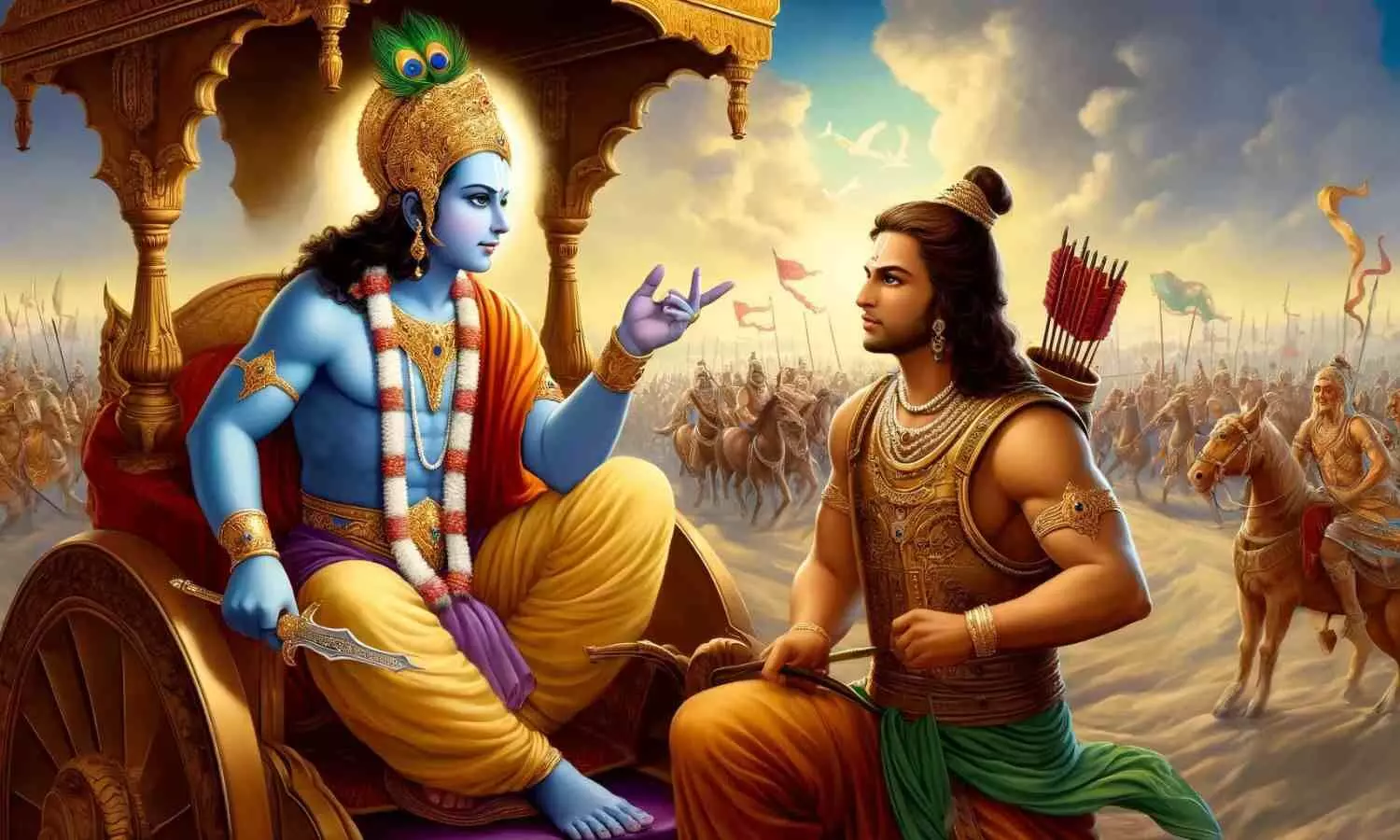Live
- India, Kuwait elevate ties to strategic level
- Nizamabad MP Dharmapuri Arvind and Jagtial MLA Dr. Sanjay Kumar Meet CM Revanth Reddy
- Hyderabad CP CV Anand Issues Stern Warning to Bouncers
- MP Laxman Criticizes Police Conduct, Calls for Support for Victims' Families
- Fire Breaks Out in Kachiguda-Chennai Egmore Express, Passengers Evacuated Safely
- CM Revanth Reddy Condemns Attacks on Film Personalities' Homes, Calls for Strict Action
- Victory Venkatesh and Nandamuri Balakrishna to Set Screens on Fire with Unstoppable Season 4
- Over 71.81 crore Ayushman Bharat Health Account numbers generated: Centre
- In special gesture, Kuwait's Prime Minister sees-off PM Modi at airport after conclusion of historic visit
- Veer crowned PGTI Ranking champion, Shaurya wins emerging player honour
Just In
Understanding Consciousness in the Bhagavad Gita: Spiritual and Universal Awareness


Understanding Consciousness in the Bhagavad Gita: Spiritual and Universal Awareness
Learn how the Bhagavad Gita explains consciousness as a universal essence and guides on self-realisation, giving a deeper understanding of human existence.
Hindu texts such as the Vedas and the Bhagavad Gita offer deep insights into consciousness. These texts, especially the Gita, suggest that consciousness is more than a brain function. It is a fundamental element of existence and present throughout the cosmos. The Gita portrays consciousness as a universal essence that transcends individual beings. It offers a framework to understand the universe's interconnected nature. This article explores these teachings to reveal consciousness’s deeper significance.
Consciousness as the Essence of Existence – An Overview
Consciousness in the Gita is portrayed as the underlying force that shapes existence itself. It serves as the fabric upon which reality unfolds that provides structure and meaning to life. This essence of existence exists within every being and particle, sustaining life and giving it purpose. The Gita suggests that understanding this essence allows individuals to see beyond physical appearances and recognize the deeper truth of their existence. One can gain a more profound sense of purpose and harmony by realising that everything in the universe emerges from this foundational consciousness.
A Conscious Approach to Life with Bhagavad Gita
The Bhagavad Gita describes consciousness as universal and all-encompassing. It is not limited to individual bodies or minds but pervades everything in the cosmos. According to the Gita, this universal aspect of consciousness is what gives life to all beings. Consciousness is everywhere. It transcends time and space. Besides, it connects all beings and elements of nature.
Read on to learn how the teachings of Bhagavad Gita help us tap into our consciousness.
Transcending the Ego and Identity - A major teaching in the Gita is the idea that consciousness exists beyond personal identity. It goes beyond the physical body and the individual ego, which is often shaped by attachments, desires, and fears. The Gita encourages looking beyond these personal boundaries, as consciousness is eternal and unlimited. This transcendent quality allows individuals to move beyond everyday limitations, viewing themselves as part of a larger and boundless existence.
The Connective Fabric of Life - The Gita describes consciousness as a connective force that unites all beings. This connection helps in fostering a sense of unity and oneness. It focuses on the fact that all life is woven into one shared experience. Recognizing this interconnected nature leads to a greater respect for all life forms. It encourages compassion and empathy. Individuals are inspired to live in harmony with nature and others by seeing consciousness as the thread that links all beings.
Self-Realisation and Awareness of the Atman - Self-realisation in the Bhagavad Gita is a journey toward understanding one’s true nature, the Ātman, which is the eternal self beyond the mind and body. The Gita teaches that true self-awareness means recognizing that one’s inner self is divine, unchanging, and connected to the cosmos. This awareness brings clarity. It enables individuals to look beyond temporary emotions and situations. Self-realisation encourages a detachment from the fluctuations of the mind and emotions.
Practical Implications of the Bhagavad Gita to Enhance Consciousness in Daily Life
Conclusion
The Bhagavad Gita’s teachings on consciousness ultimately inspire individuals to live with purpose and clarity. One can align with higher values, experience inner peace, and contribute positively to the world by embracing a consciousness-centred life. This awareness brings a sense of fulfilment and contentment and helps individuals connect with the divine and live in harmony with the universe. Consciousness is not just a state of mind. Through the lens of the Gita it is a journey toward a life of spiritual awakening and understanding.

© 2024 Hyderabad Media House Limited/The Hans India. All rights reserved. Powered by hocalwire.com






